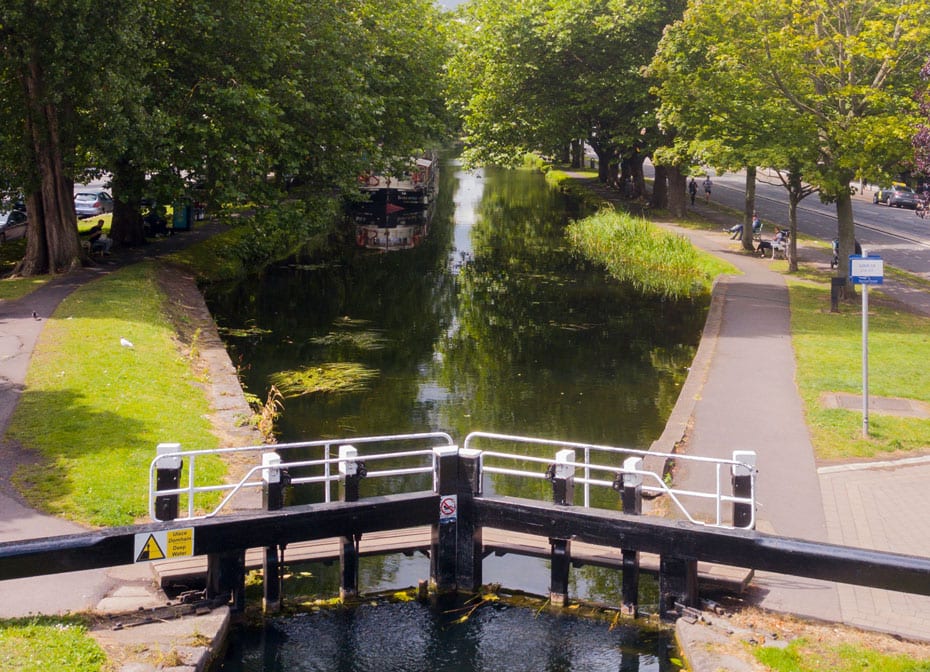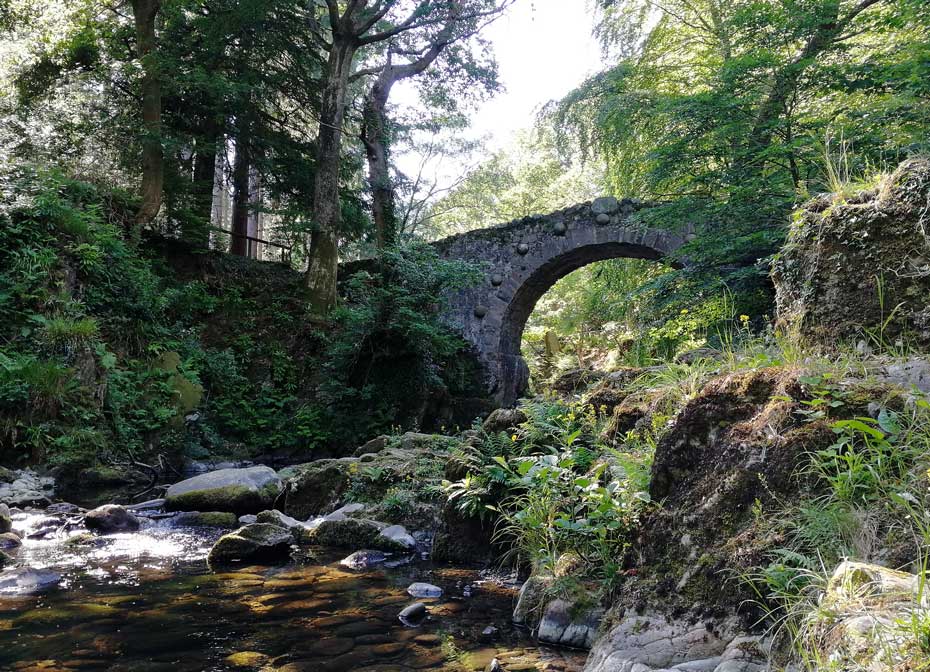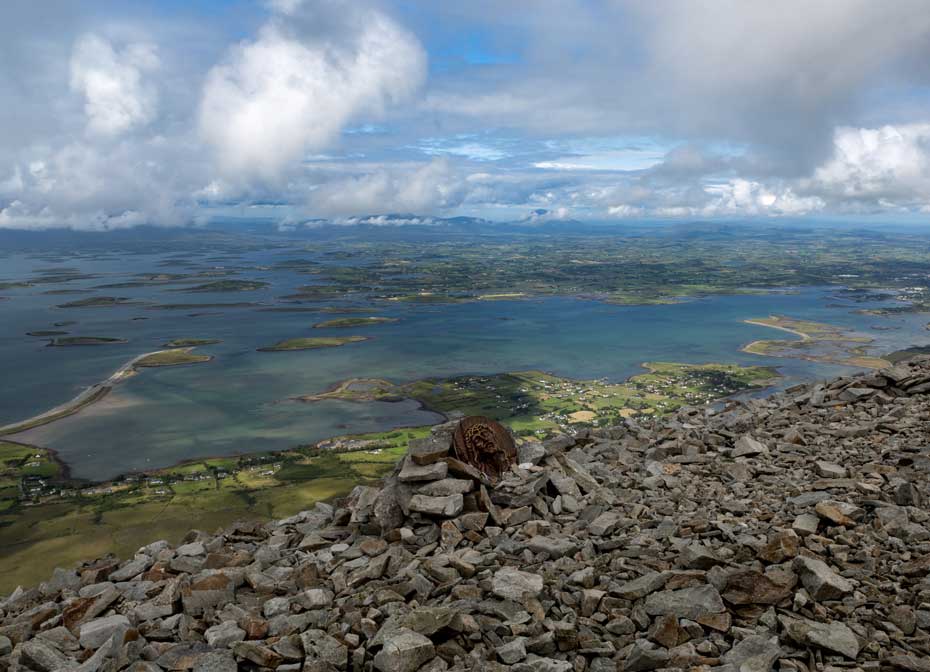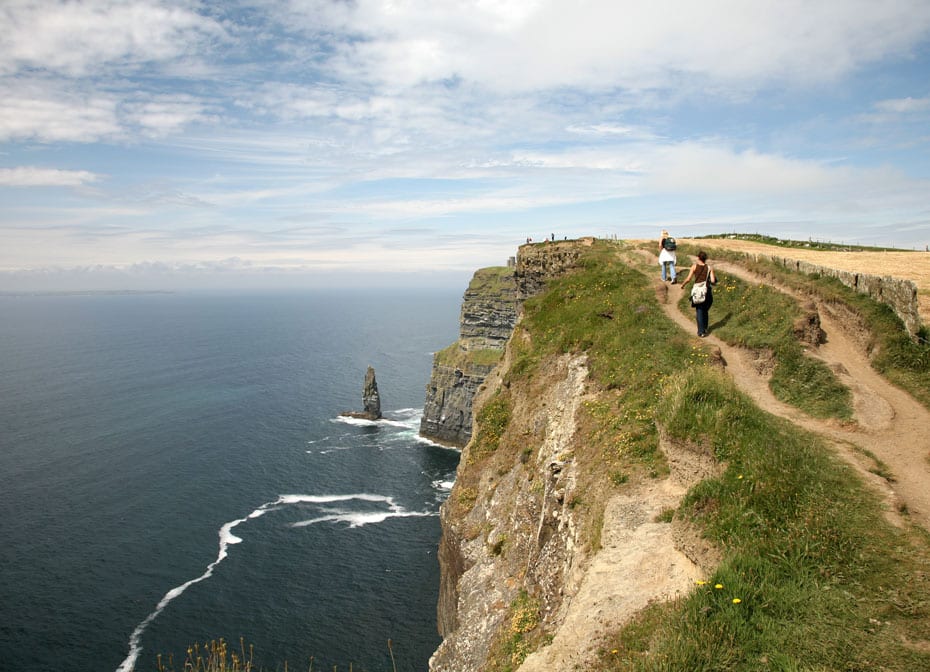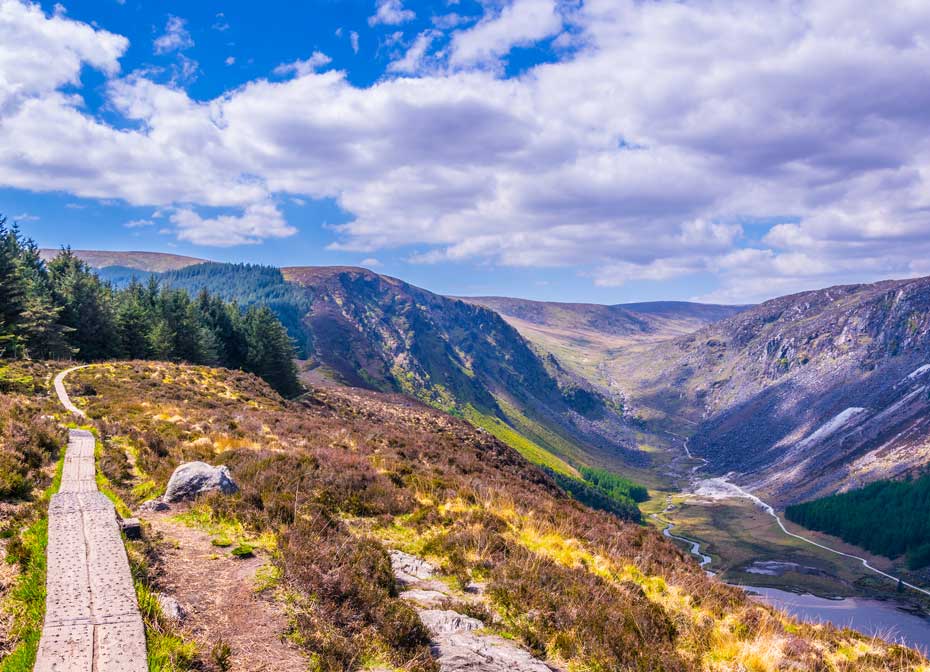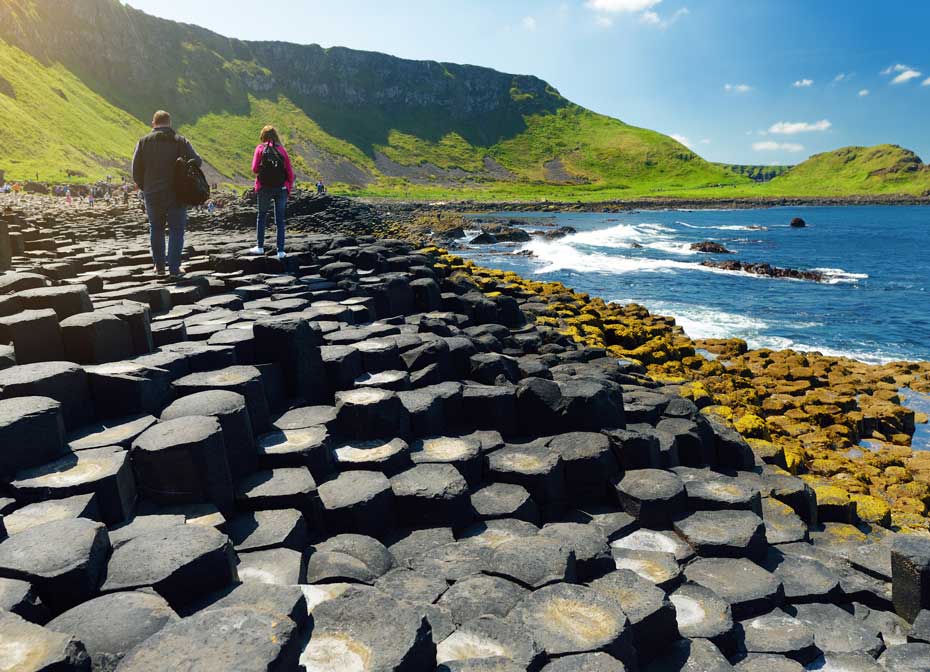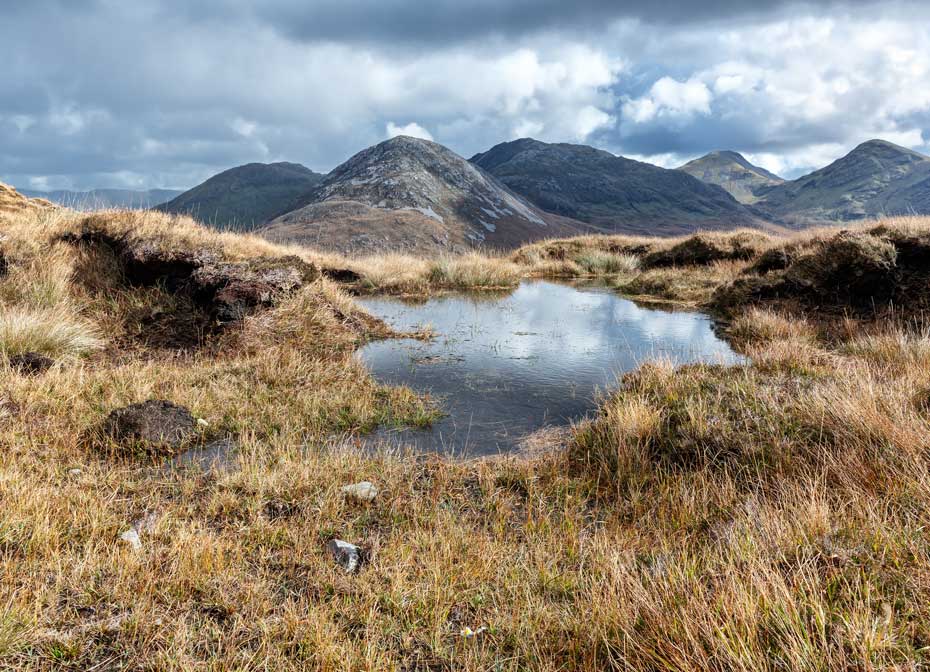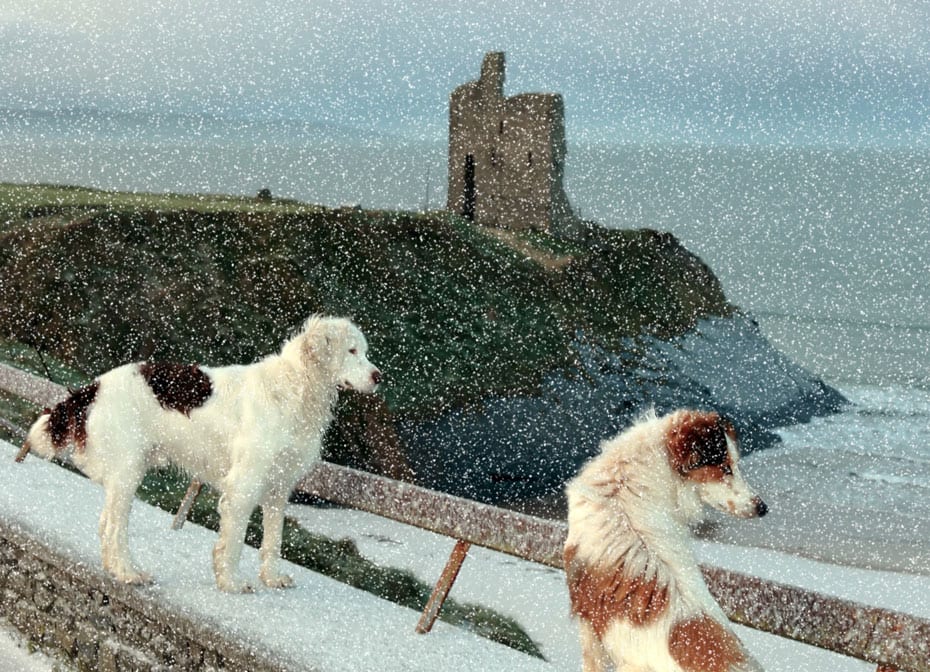Scenic Walks of Ireland
Here in Ireland, we’re blessed with an overabundance of stunning walking destinations. From majestic mountain tops to verdant canal bank strolls and breathtaking beaches – this island of ours has something to suit walkers of all interests and levels of experience. With the new year upon us, we’ve hand-picked a selection of the very best destination walks for you and yours to enjoy in 2021.
Torc Mountain Trail – Co. Kerry
Torc Mountain trail and its centrepiece, Torc Waterfall, are rightly lauded as some of county Kerry’s must-see attractions for hillwalking enthusiasts. The early stages of the Torc trail twist and turn through a typically stunning Kerry Landscape of stone and heather before the first of several boardwalk sections reveals itself. Made-up of repurposed railway sleepers, the boardwalk section meanders its way through the heather, its curves serving to reduce the harshness of the mountain’s incline – a welcome development for less experienced walkers. Half way up Torc, you’ll encounter a viewing platform ideal for a moment’s respite to catch your breath and take in the gorgeous views of the valley below. When you’re enjoying the vistas, be sure to cast an eye upwards as you might catch a glimpse of one of the White Tailed Sea Eagles that inhabit Killarney National Park and often traverse the skies around Torc. If you miss out on the eagles, there is plenty of local fauna to be found on land. The deft footing of the local deer and mountain goats are sure to put even the most seasoned walker to shame.

As you approach Torc’s summit, the boardwalk is replaced by peat covered tussocks and yet another remarkable scene begins to reveal itself. From the top, you can take in another stellar view of Killarney’s three lakes, the McGillycuddy Reeks and the Killarney valley beneath you.
Grand Canal Walk – Dublin
The Grand Canal was first conceived with trade in mind. Designed to link the commercial hub of Dublin with the West of Ireland, through the midlands and by connecting with The River Shannon. After over a century of use as a crucial route for watercraft laden with goods, the canal was closed to commercial traffic in the 1950s. Recent decades have seen the canal gradually restored for amenity use with barges, kayaks, canoes and a variety of other pleasure craft to be found making their leisurely way down the canal’s peaceful waters.
The Grand Canal Way follows the picturesque banks of the canal, linking Lucan Bridge in Adamstown, County Dublin and Shannon Harbour in County Offaly. Much of the landscape that characterises the route has remained thankfully untouched by modern agricultural techniques. In essence, this remarkable canal bank stroll serves as something of an oasis for the native plants and animals that were once common throughout the countryside.
Natural beauty aside, over the course of the 128 kilometre route, walkers will encounter no shortage of historical and culturally significant attractions like lovingly restored lock-keepers cottages and inviting small towns and villages whose very existence is intrinsically linked to the lifestyle and trade associated with their canalbank locale. These appealing hamlets are ideal for an overnight stop for those tackling the the full Canal Walk, or as ideal personalised beginning and end points for those only looking to take in a portion of the extended route.
Slieve Donard Climb – Co. Down
Northern Ireland’s highest natural peak, Slieve Donard is one of the finest hillwalking destinations on the island of Ireland. Slieve Donard looms large over the famed Mourne Mountains. The Mournes are made up of a slew of mountains and hills and with 12 peaks reaching over the 600 metre range, hillwalkers of all abilities are certain to encounter a route suited to their experience and interests.
The climb up Slieve Donard itself is relatively manageable considering the quality and breadth of the views that awaits you on reaching the summit. Though the route from the carpark to the peaks clocks in at little over 4.5 kilometres, the gradient can be a little unforgiving at times so be ready to break a sweat. Over the course of your journey, you’ll encounter a few false peaks, so be patient and wait until you arrive at Donard’s iconic look-out point before you begin celebrating. From the top, enjoy the views of the glorious Mournes rippling below. If you’re lucky enough to reach the summit on a clear day, you might also catch a glimpse of the Isle of Man in the distance, the Wicklow Mountains to the south, not to mention the peaks of Wales, Scotland and even Donegal to the west.
Eagle’s Rock Walk – Co. Leitrim
Leitrim’s Eagle’s Rock Walk is centred around the imposing figure of what many have come to call Eagles’ Rock. Jutting dramatically from the already stunning environment, at 330 metres tall Eagles Rock is the tallest freestanding rock tower on the island of Ireland. But to focus exclusively on only the highest point would be to do the remarkable surroundings a major disservice.
As you approach the walks’ endpoint, you will quickly find yourself surrounded by almost countless natural pillars and jagged arêtes – all formed by a glacial melting and a major mountain collapse approximately 12,000 years ago. The peculiarity and majesty of this elemental,evocative, almost enclosed space around the rock tower is hard to express without visiting for oneself. Ultimately, Eagles Rock walk is a lesser-known gem and a great, short yet challenging destination for moderately experienced walkers.
The Wicklow Way – Co. Wicklow
Stretching over 131 kilometres and linking Dublin’s Marley Park with Clonegal in Country Carlow, we easily could have dedicated this entire piece to the variety of stunning vistas and tucked-away gems you’ll encounter across The Wicklow Way. Originally proposed in 1966 by famed Irish Hillwalking enthusiast, J.B Malone, in his then widely read Over the Hills column in the Evening Herald. Eventually, in 1977, Malone was appointed to the Long Distance Walking Routes Committee of Ireland and began the process of making his dream a reality.
The first section of the trail opened in 1980, with the trail finally being completed in 1982, making it the oldest of Ireland’s National Waymarked trails and the first to be included in the network of European Long Distance Paths. The route is part of the early stages of the E8 European Long Distance Path, a Herculean journey that links the Atlantic coast of West Cork and Istanbul.
A memorial to commemorate the life of Malone and his peerless impact on the culture of hillwalking in Ireland was erected on his death in 1989 and can be found near Lough Tay; a stunning lake nestled in the mountains of Wicklow and one of the jewels in the crown of The Wicklow Way.
Hook Peninsula Walk – Co. Wexford
The Hook Peninsula is one of the jewels of Ireland’s Ancient East. Stretching out from the scenic Southeast corner of Ireland, stradling Waterford & Kilkenny, the Hook Peninsula is world renowned for its awe-inspiring vistas, national heritage sites, gorgeous gardens, and calm seas – there’s no finer example of untouched ancient Ireland. All that considered, it is little surprise that the walk that bears the peninsula’s name is really something special indeed.
The walk clocks in at about 3 kilometres and is ideal for walkers of all stripes, even absolute novices. Sea views are the order of the day on this glorious, leisurely stroll. The great platforms of fissured limestone that adorn the surrounding cliffaces have been adopted by many local anglers hoping to snag the evening’s supper. Situated on Hook Head at the tip of the Hook Peninsula and the culmination of the walk’s route; Hook Lighthouse is the oldest operating lighthouse in the world and routinely voted one of Ireland’s most loved tourist attractions.
Croagh Patrick Climb – Co. Mayo
Croagh Patrick is a 764 peak, the highest in county Mayo, that looms over the villages of Murrisk and Lecanvey, about 8 kilometres away from the bustling town of Westport. Crough Patrick has long held a position of major cultural significance as perhaps the country’s best known site of religious pilgrimage. On the last Sunday of every July, thousands of pilgrims scale the peak in honour of Saint Patrick who, as the legend goes, prayed and fasted at the mountain’s peak for forty days in the year 441. To further the peak’s religious significance, there has been a chapel situation on the mountain’s summit since approximately the 5th century. The small chapel present day hillwalkers encounter at the mountain’s pinnacle was built and dedicated in the summer of 1905.
Despite its popularity, the Crough Patrick Climb is not without its hazards. Steep, slippery and rife with uneven scree toward the summit, be sure to keep mindful of conditions underfoot when you’re taking in the breathtaking views that meet you at all sides. Thankfully, the mountain’s peak is spacious enough for successful climbers to stroll around, put their feet up and enjoy a well-earned moment’s reflection as they drink in the panoramic views of Mayo and North Galway. Be sure to note the hundreds of drumlin islands that make up Clew Bay and Clare and Achill Islands in the distance.
Doolin Cliff Walk – Co. Clare
One of the gems of Wild Atlantic Way and boasting some of the most breathtaking scenery in Ireland, The Doolin Cliff Walk is a must for any hillwalking enthusiast. Famously, this inspiring walk runs alongside the majestic Cliffs of Moher.
One of Ireland’s most visited natural attractions, The Cliffs of Moher and their attached visitor centre are open all year round. Highlights include over 800m of cliff edge paths and viewing areas, the gothic style 19th century O’Briens Tower and the eco-friendly underground visitor centre building containing visitor services and facilities, gift shop, restaurant & coffee shop and the award winning Atlantic Edge Exhibition.
As a special protected area for seabirds, The Cliffs are home to over 30,000 pairs of seabirds. Birders, bring your binoculars, Guillemots and Razorbill can be found all along the cliffs along with Puffins, Kittiwakes, Fulmars, Peregrine Falcons and Choughs.
Glendalough (Upper) Trail – Co. Wicklow
Glendalough’s Upper Trail weaves its way through some of the most remarkable and monumentally beautiful landscapes that The Garden of Ireland has to offer. Glendlalough and the surrounding areas was a hub of activity during the medieval period, so this trail is a real treat for hillwalkers looking for some historically significant pit stops to compliment the natural beauty that defines the locality. One such archaeological marvel is Temple-na-Skellig. This small rectangular church on the southern shore of the Upper Lake remains accessible only by boat. To the West of the church, you’ll see a raised platform with stone enclosure walls, where huts and other dwellings likely stood hundreds of years ago.
In terms of flora, Glendalough is surrounded by oak woodland; it too a remnant of the monastic lifestyle once associated with the lough. As much of these trees are thought to have been planted and cultivated with the intention of being regularly harvested to produce wood and charcoal for crafting. Secluded and bountiful as it is, the area surrounding Glendalough’s upper trail is also home for some of the country’s rarest animals. Birders keep you eyes peeled, if you’re lucky you might just catch a glimpse of a redstart ,wood warbler, white-throated dipper, cuckoo or even a eurasian jay.
Causeway Coast Walk – Co. Antrim
The gorgeous coastal walk that links the bustling tourist towns of Portstewart and Ballycastle is one of Northern Ireland’s most enticing walking routes. This relatively manageable walk is perfect for inexperienced walkers looking to explore the rugged coastline that the northern reaches of Ireland have become famous for. With the highest peak of the trail clocking in at just over 140 metres above sea level, novices should be well within their abilities.
To complete the walk from start to finish shouldn’t take more than 2 or 3 days – leave plenty of time for pit stops, naturally – and variety is very much the order of the day. The wide spectrum of different terrains on offer is one of the Coastal Walk’s biggest draws. Aside from the cliff-side vistas the walk route is famous for, walkers will also encounter peaceful beach-side sections along with neatly appointed promenade strolls. The Causeway coastal walk can also serve as the ideal backbone for a more wide reaching exploration of some of Northern Ireland’s best known tourist attractions; Dunluce Castle, The Giant’s Causeway and the Carrick-a-Rede Rope Bridge are all destinations in their own right and reveal themselves along the route of the Causeway Coastal Walk. The Bushmills distillery can also be found just a short detour from the trail, just in case of a warming snifter in order to counteract the effects of a few hours of exposure to the elements.
Connemara National Park – Co. Galway
One of the most unique visually striking walks on our list weaves its way through the otherworldly surrounds of Connemara National Park at Letterfrack. The West of Ireland’s only national park boasts some of Connemara’s most spectacular scenery spread out over 4,942-acres. Almost devoid of the signs of modern man-made development, the park is a blend of mountains, bogs, heaths, grasslands, rivers, waterfalls, and nature trails.
Be sure to keep a keen eye out for the famed Connemara Ponies that roam alongside the assorted other wildlife that populate the park. Connemara National Park has more to offer than just a bracing stroll; the lovely visitor center offers an exhibition on the Connemara landscape and an audio-visual show about the park. The Park’s field laboratory is also housed behind the Park Office and is used by research students researching the unique wildlife native to Connemara.
Ballybunion Coast Walk – Co. Kerry
Ballybunion’s Looped Coast Walk is the ideal walk for novice walkers eager to take in the beautiful sea views Kerry is famous for. Taking about 2 hours to complete, the route begins at Ballybunion’s North Beach and leads walkers along some of country’s most stunning cliffs and through the world famous Ballybunion Links Golf Course.
The route is perhaps best known for the spectacular, sheer 180 foot Bromore cliffs. Sculpted by nature over the course of thousands of years, Atlantic waves have formed headlands, carved deep caves at sea level and even produced arches and sea stacks that must be seen to be believed. The cliffs’ own unique mineral composition is responsible for their unusual array of ever-changing colors. The walk along the cliff top is safe, well fenced and suitable for all ages. Be sure to keep an eye out for Seals, Dolphins and, if you’re lucky, Sea Otters in the waters below.
Book an appointment now
For a quick and easy way to make an appointment book online now.

